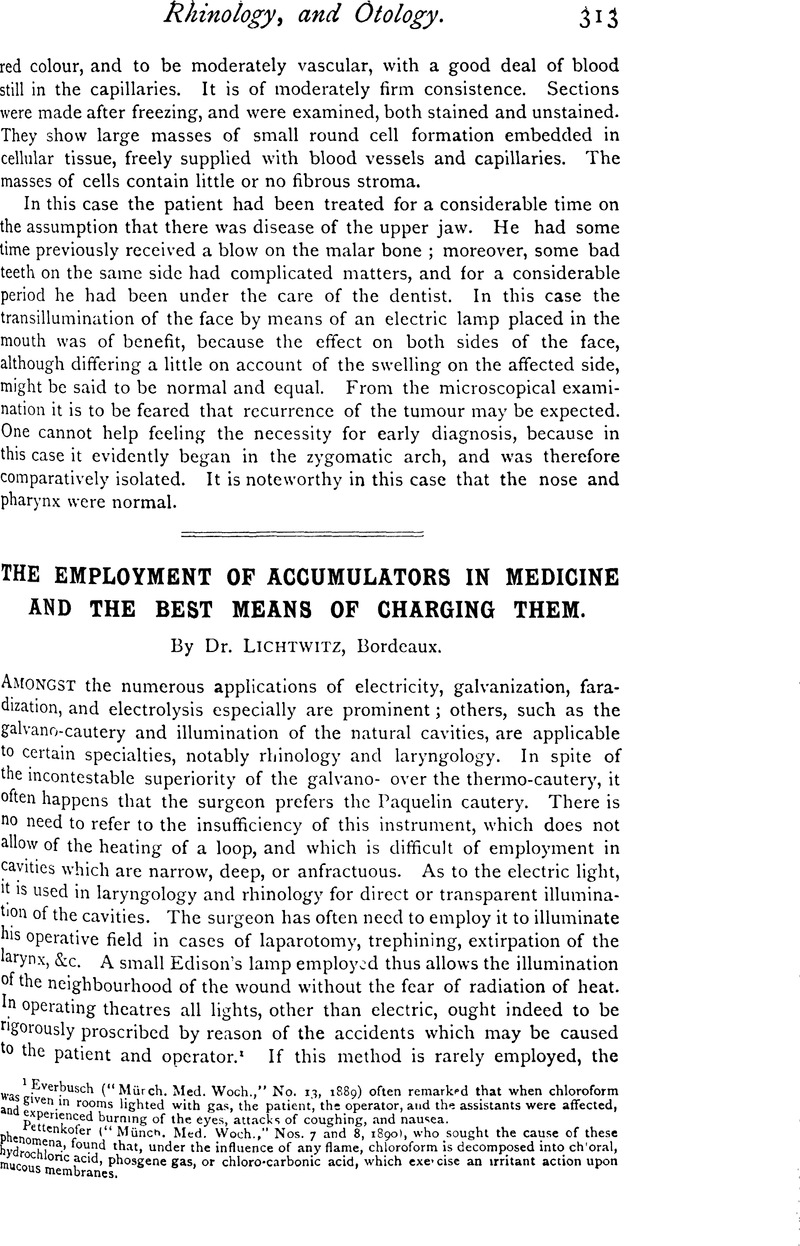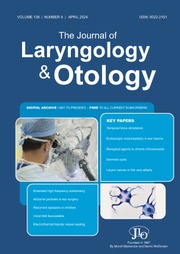No CrossRef data available.
Article contents
The Employment of Accumulators in Medicine and the best means of Charging them
Published online by Cambridge University Press: 06 August 2007
Abstract

- Type
- Original Articles
- Information
- Copyright
- Copyright © JLO (1984) Limited 1893
References
1 Everbusch, (“Mürch. Med. Woch.,” No. 13, 1889)Google Scholar often remarked that when chloroform was given in rooms lighted with gas, the patient, the operator, and the assistants were affected, and experienced burning of the eyes, attacks of coughing, and nausea.
Pettenkofer, (“Münch. Med. Woch.,” Nos. 7 and 8, 1890)Google Scholar who sought the cause of these phenomena, found that, under the influence of any flame, chloroform is decomposed into chloral, hydrochloric acid, phosgene gas. or chloro-carbonic acid, which exercise an irritant action upon mucous membranes.
2 “Monats. für Ohrenheilk.,” No. 10, 1883Google Scholar; “Rev. Mens. de Laryng.,” pp. 70–74, 1883Google Scholar; “Rev. Mens. de Laryng.,” pp. 292–297, 1884.
3 McBride, , “Edinburgh Med. Journ.,” Dec., 1884.Google Scholar
4 Semon, , “Lancet,” 14, 21, 28 Mar., 1885.Google Scholar
5 Ogston, , London, 1887.Google Scholar
6 Kuhn, , “Deutsche Med. Woch.,” 24 Oct., 1889.Google Scholar
7 Seligmann, , “Therap. Monats.” No. 12, 1890.Google Scholar
8 Trautmann, , “Deutsche Med. Woch.,” No. 15, 1890.Google Scholar
9 Lamann, , “Monats. für Ohrenheilk.,” Nos. 2, 3, and 11, 1891.Google Scholar
10 Freudenthal, , “Monats. für Ohrenheilk,” No. 8, 1891.Google Scholar
11 Cheval, , “Rev. de Laryngol.,” No. 19, 1891.Google Scholar
12 Jacobson, , “Berliner Klin. Woch.,” No. 13, 1892.Google Scholar
13 Truchot, , “Arch. d'Electricité Med.,” No. 1, 1893.Google Scholar
14 Bröse, , “Berliner Klin. Woch.,” Nos. 41 and 42, 1890.Google Scholar
15 We thank Peyramale M. of that society, who has undertaken the installation.Google Scholar
16 This table can be placed in any spot whatever where the accumulators suffer the least.Google Scholar


